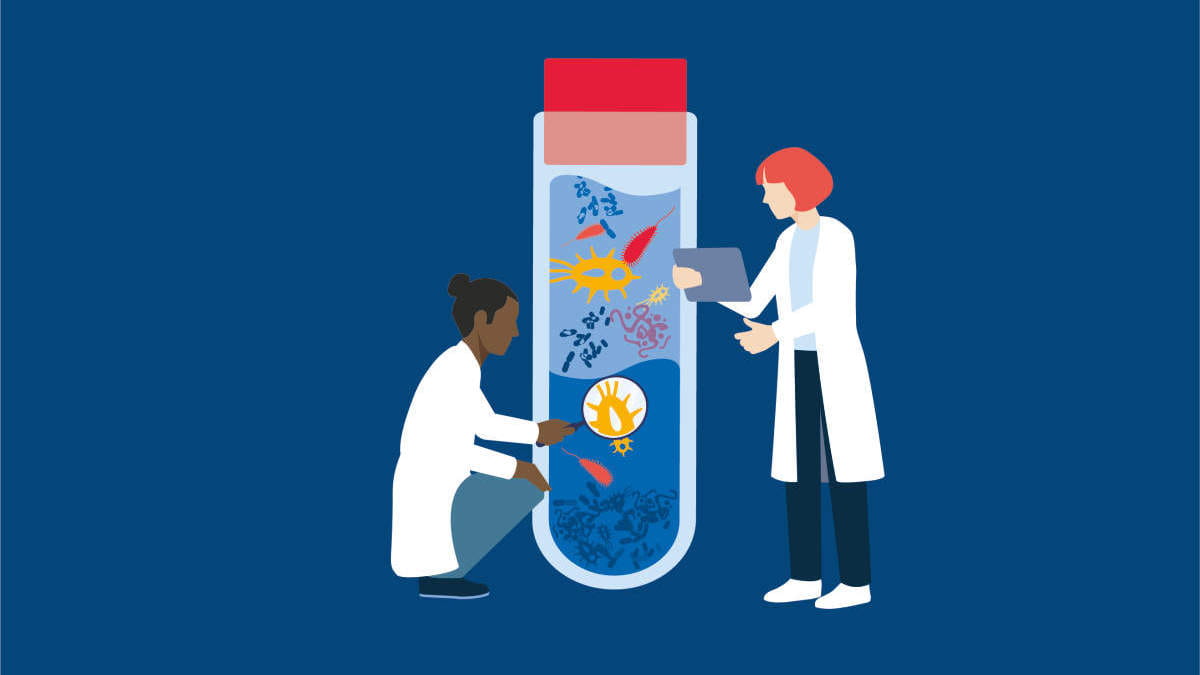
Tackling the most popular Q&As from our AMR webinar
Our recent webinar, “Supporting antimicrobial resistance research for known and future threats,” explored the multiple facets of antimicrobial resistance (AMR) research – from sample prep to AMR detection using NGS and dPCR. We received a lot of insightful questions related to QIAGEN solutions for AMR molecular analysis from our highly engaged audience during the Q&A session. Check out the answers compiled by our resident experts.
1. What’s the best way to extract microbial DNA from wastewater samples?
As wastewater samples can stem from various locations such as sewage, roads, soil or industry, they comprise chemical and inhibitory substances that may inhibit PCR or sequencing applications. Wastewater samples need to be filtered or concentrated before nucleic acid preparation. Various options like filtration using mixed cellulose ester (MCE), centrifugation and ultrafiltration are possible. The origin of the sample type dictates the optimal pre-treatment methods. We recommend using both pellet and filtered supernatant for investigation. For sample preparation, we recommend using the DNeasy PowerWater Kit, which is optimized for use with most filter membrane types, the DNeasy PowerWater Sterivex (optimized for use with Sterivex filter units) or the QIAamp PowerFecal Pro DNA Kit, which would be the recommended solution for pellets, sludge or settled solids. Automated sample preparation is also possible on QIAcube Connect, QIAcube HT or QIAsymphony SP.
2. What are your recommended microbial DNA extraction solutions for AMR analysis from a variety of challenging sample types such as soil, feces, skin and food or milk?
Soil: DNeasy PowerSoil Pro DNA Kit, either as a manual procedure or automated on the QIAcube Connect. Higher-throughput automation solutions on the QIAcube HT are available too.
Feces: QIAamp PowerFecal Pro DNA Kit, either as a manual procedure or automated on the QIAcube Connect. Higher-throughput automation solutions on QIAcube HT or QIAsymphony SP are available as well.
Skin samples: QIAamp DNA Microbiome Kit is recommended. It integrates mammalian host DNA removal, thereby ensuring efficient read allocation to microbial target genes, which is especially important for metagenomics studies.
Milk and food samples: the DNeasy PowerSoil Pro Kit has been used successfully for microbial DNA extraction from skin swabs (1).
3. Which NGS method is appropriate for the identification of AMR genes?
For known AMR genes and emerging variants, a targeted sequencing approach is recommended using our QIAseq xHYB AMR Panel.
For the discovery of novel AMR genes or metagenomic whole genome sequencing, our QIAseq FX DNA Library Kit is recommended. Read our blog post, ‘Battling known and unknown threats with NGS-based AMR detection,’ for further insights and an evaluation of the two methods.
4. When it comes to NGS-based detection, what are the requirements for extracted genetic material?
Our QIAseq xHYB AMR Panel is compatible with RNA, DNA and total nucleic acid (TNA), and accepts inputs of 10 to 100 ng. When starting with RNA or TNA, the QIAseq xHYB Viral and Bacterial Panel workflow begins with converting the total RNA in the sample into cDNA. The reverse transcription product is then converted into double-stranded cDNA, which is then used as the input for QIAseq FX DNA Library construction after a QIAseq Bead cleanup. If starting with DNA, it is possible to start with library construction using the QIAseq FX DNA Library Kit.
5. When performing digital PCR, in the case of duplicates, I'm getting a drastic difference in copy number but not when I perform qPCR. Why is that and how do I interpret the results?
dPCR is a highly precise and accurate method, so duplicates might look slightly different due to small variations in your experiment. These variations could include differences in pipetting or other small changes typically related to DNA extraction. Please note that with dPCR, you can detect differences as low as 1 copy/µL, whereas, with qPCR, you can discriminate with a ΔCq higher than 1. For more information, please check out our application note on optimizing dPCR assays and how to move from qPCR to dPCR.
6. Do you have lists of sequences/primers used for AMR genes? Is multiplexing possible, and if so, what are the advantages?
Yes, we have many assays that are specialized for AMR genes, as well as panels targeting AMR genes. We can multiplex up to five different targets with the QIAcuity Digital PCR System. Learn more about the benefits of multiplexing in our latest QIAgenius video.